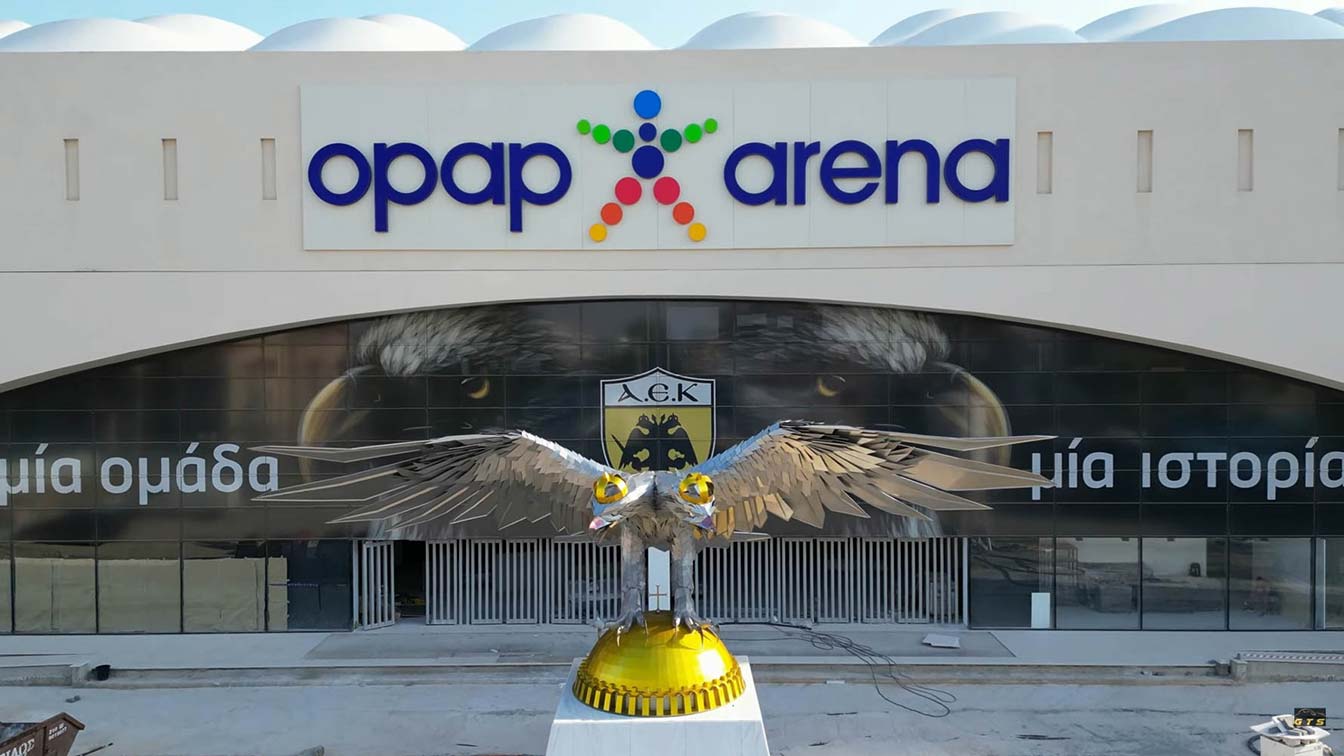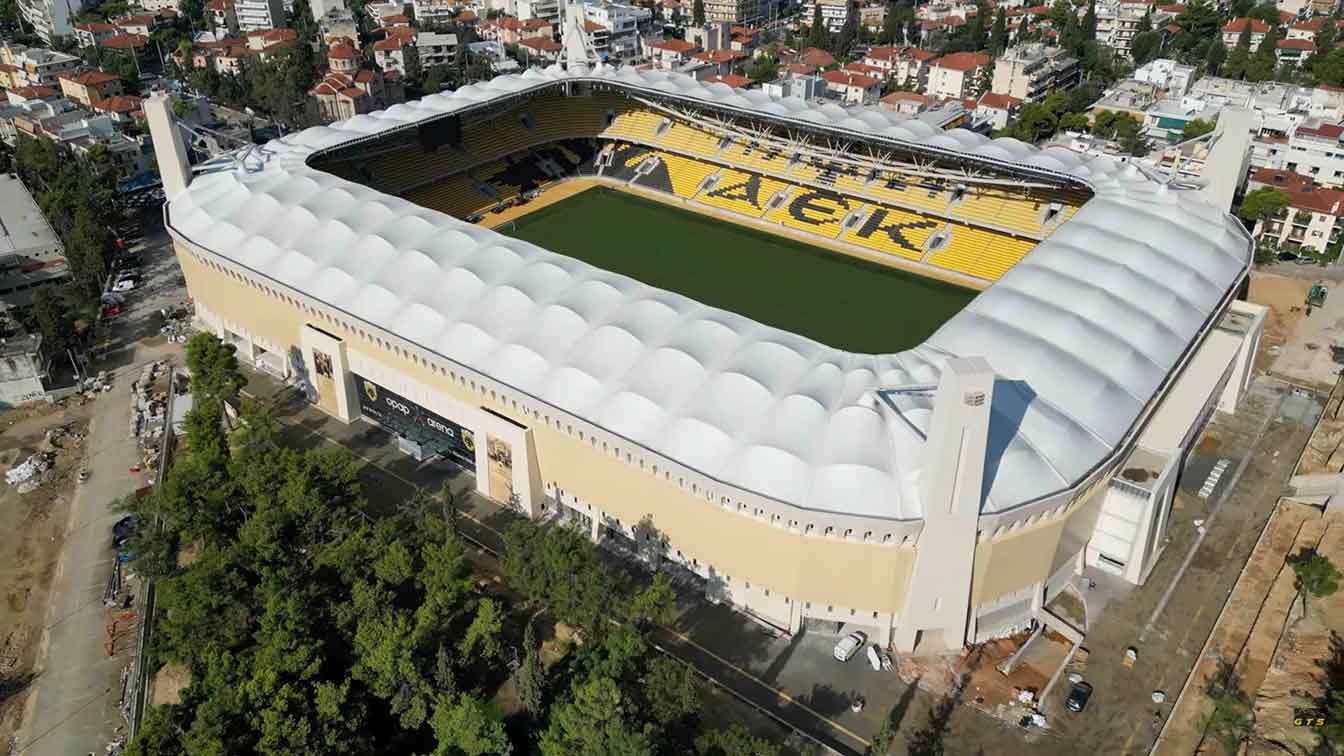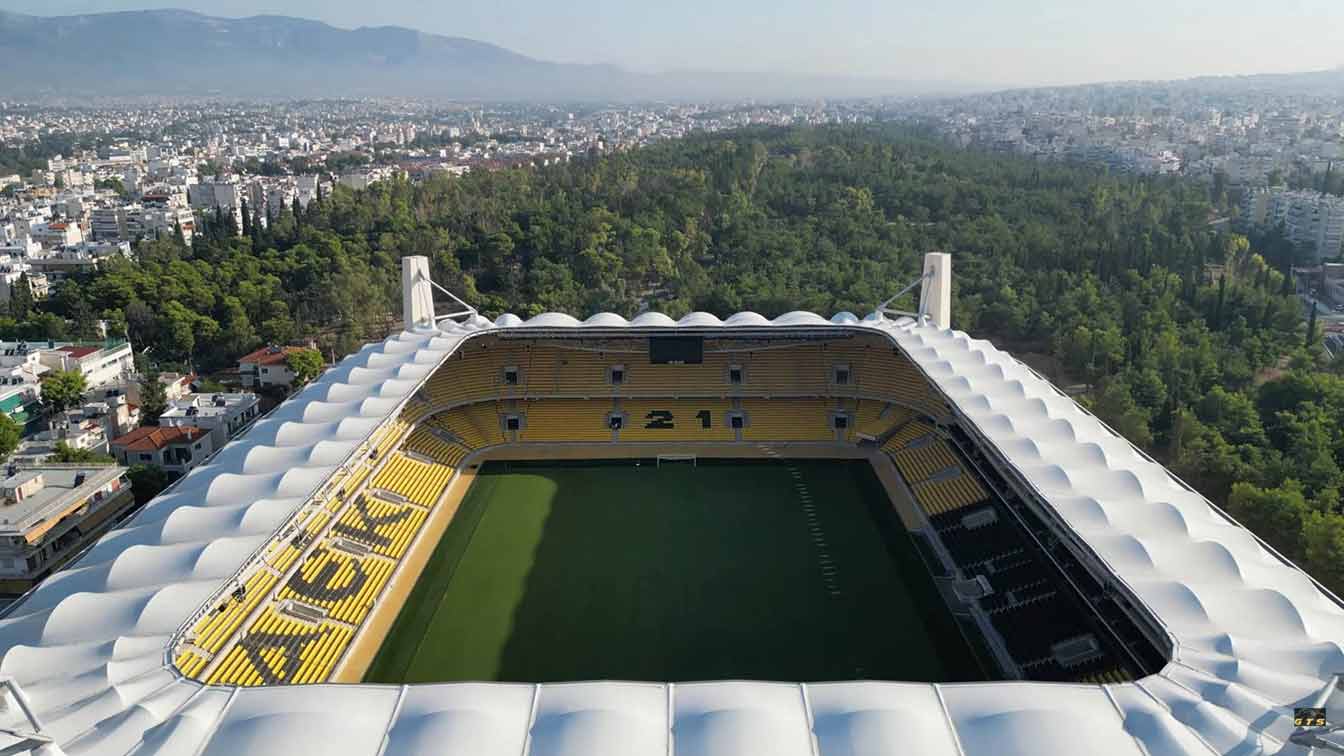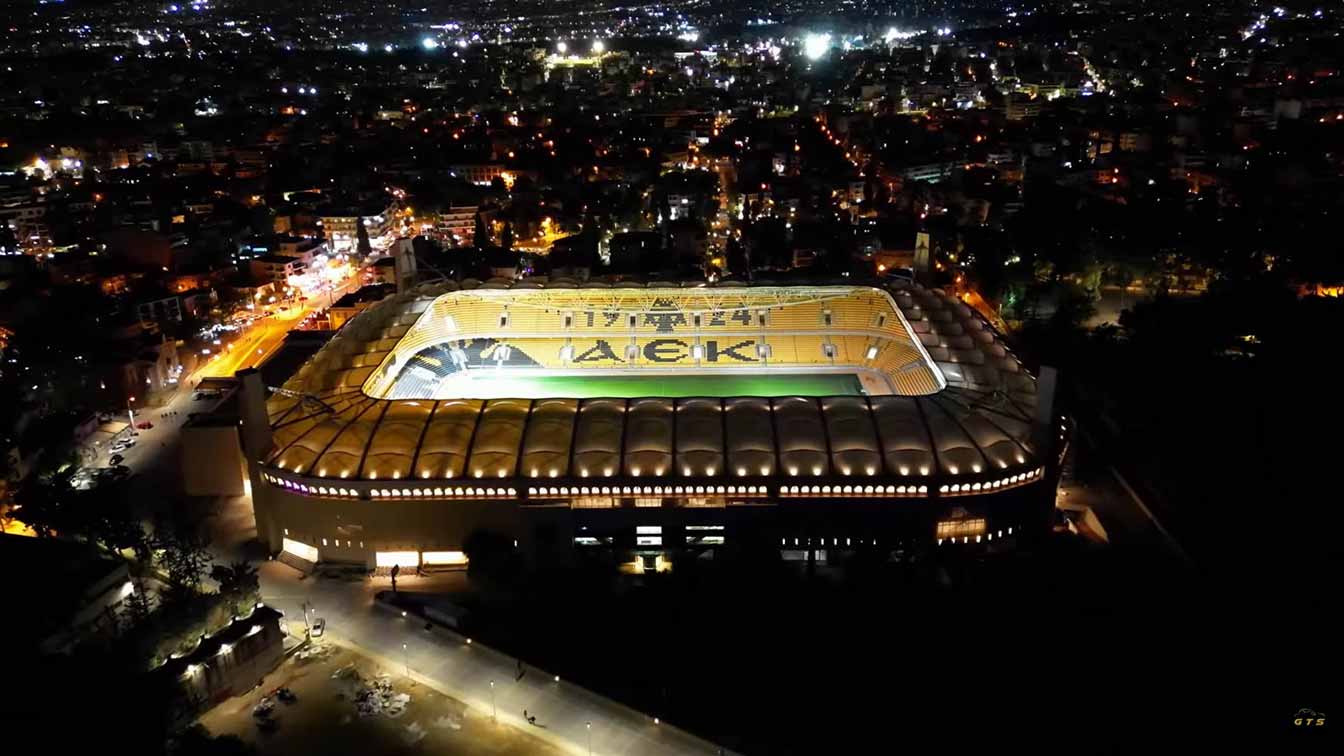New stadium: The eagle flew over Athens again
source: StadiumDB.com; author: Robert Saganowski / Aleksander Hosny
 Nine years after the first visuals were published and more than five years after construction began, it is finally here - the facility in Athens has finally made it onto the stadium map of Europe. Meet the new home of AEK FC, OPAP Arena! The 32,500-seater was built in the northern part of the Greek capital.
Nine years after the first visuals were published and more than five years after construction began, it is finally here - the facility in Athens has finally made it onto the stadium map of Europe. Meet the new home of AEK FC, OPAP Arena! The 32,500-seater was built in the northern part of the Greek capital.
Advertisement
In 1999, Athens was hit by an earthquake in which the then home of AEK Athens, Nikos Goumas Stadium, also known as Hagia Sophia, was damaged. The facility opened in 1930 and has since served as the home of AEK Athens, a club founded in 1924 by Greek refugees who left Istanbul after the Greek-Turkish War.
After the earthquake, the stadium continued to be used, but it was eventually decided to close and demolish it, which happened in 2003. AEK moved to the Olympic Stadium, and a completely new stadium with an indoor arena and a shopping centre was to be built in place of the torn-down facility.
Objections from local residents, administrative obstacles and other circumstances meant that plans to build a new stadium could not go ahead immediately, even though the initiators had intended for it to be ready for the 2004 Olympic Games and to host matches of the football tournament as part of that event.
New plans for the facility (already without a sports hall or shopping centre) were presented in autumn 2013, and the first groundworks did not start until July 28, 2017. Subsequent difficulties, including the COVID-19 pandemic, caused delays in construction. The grand opening of OPAP Arena took place on September 30, 2022, and AEK played its first match there on October 3, against AO Ionikos.
The move to the new stadium had a symbolic significance and was a return to tradition for AEK, one of Greece's most successful clubs, to a venue that had served as its home almost from its very beginnings. In addition, on a day-to-day basis the Olympic Stadium was simply too big for the team.
The stadium was designed by the Thanasis Kyratsous studio and is supposed to loosely refer to ancient architecture. The structure has monumental entrances with the south stand being enlarged by a wide pavilion. In front of the latter is a small square, which was created by the construction of a tunnel for the street that runs across it. Right in front of the pavilion is a metal sculpture of a two-headed eagle, the club's symbol.
Four towers were erected in the corners of the stadium, which, apart from their aesthetic value, also have a practical function, supporting the construction of the roof. Among the most important elements of the canopy are the four arched trusses at the underside, which run parallel to the side and end lines of the pitch. The roof sheathing is made of a white membrane. Floodlights were installed in the roof, and two LED screens were suspended above the stands behind the goals.
The auditorium is divided into two tiers and equipped with plastic seats in yellow and black color (predominantly the yellow ones). The main stand with boxes is located on the eastern side. The capacity of the arena is 32 500 spectators. There are parking spaces at the stadium, including some underground. While still under construction in the summer of 2020, the arena's title sponsor was announced as the Greek bookmaking company and lottery games producer, OPAP.
Advertisement
 StadiumDB
StadiumDB ©
©  ©
©  ©
©  ©
©